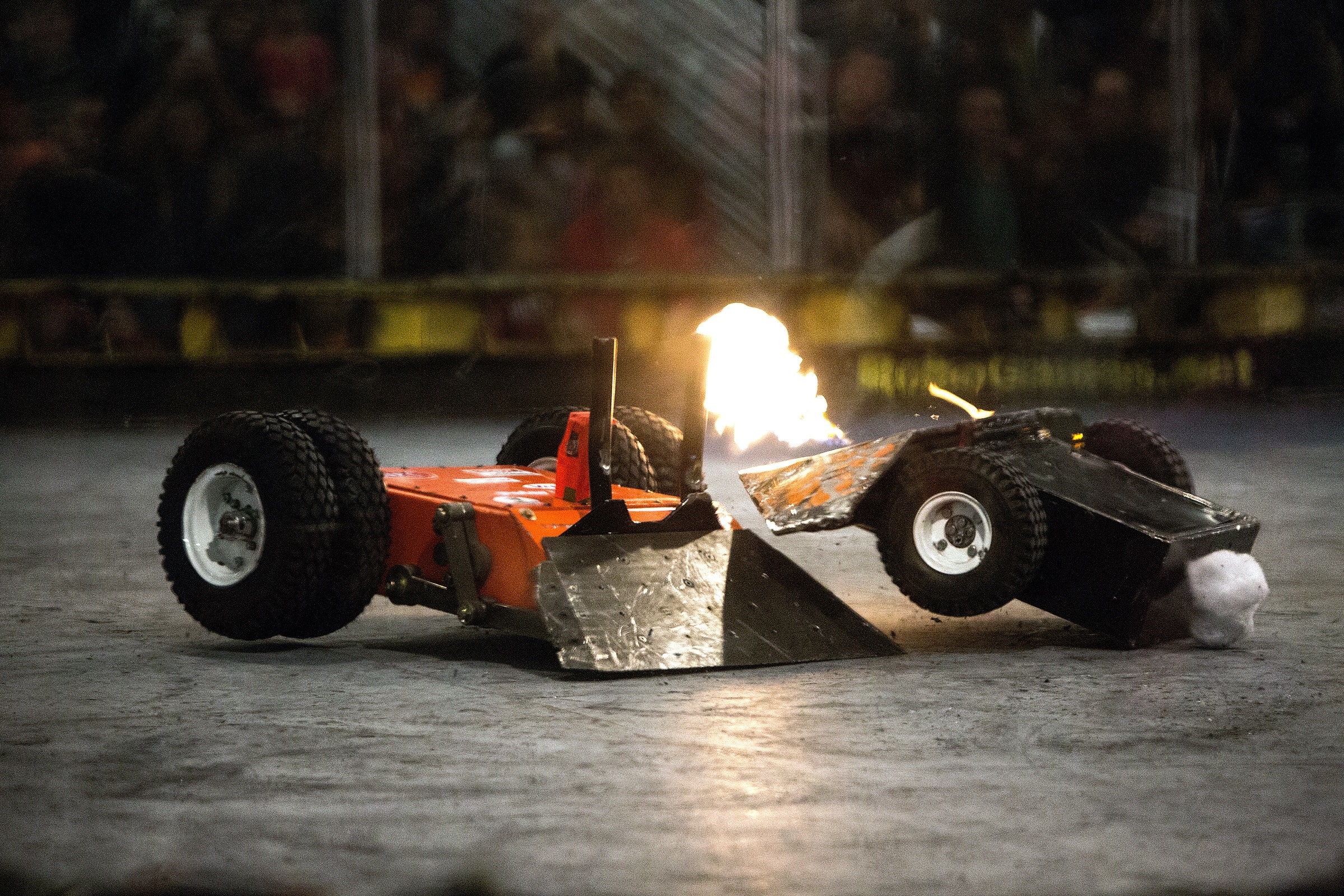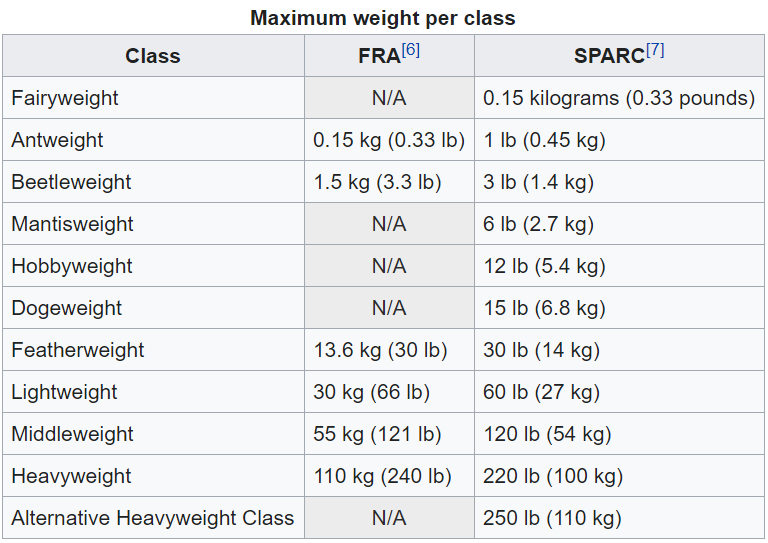battlebots

how does it work?⌗
It is a combat between two remote controlled robots until one is incapacitated. This competitions are televised the most famous ones are robot wars in the UK and BattleBots in the US, they were televised for a short period of time in the 1990 and 2000, with a little hype in the 2010. There are smaller robot combat events that are staged for live audiences such as those organized by the Robot Fighting League.
Robot builders are generally hobbyists and the complexity and cost of their machines can vary substantially. Robot combat uses weight classes, with the heaviest robots able to exert more power and destructive capabilities. The rules of competitions are designed for the safety of the builders, operators, and spectators while also providing for an entertaining spectacle. Robot combat arenas are generally surrounded by a bulletproof screen.
Competitor robots come in a variety of designs, with different strategies for winning fights. Robot designs typically incorporate weapons for attacking opponents, such as axes, hammers, flippers and spinning devices. Rules almost always prohibit gun-like weapons as well as other strategies not conducive to the safety and enjoyment of participants and spectators.

Safety precautions⌗
Given the violent nature of robot fighting, safety is always the most important issue at robot events. Robot fights take place in a sturdy arena, usually constructed of steel, wood, and bulletproof clear Lexan plastic. The smaller, lighter classes compete in smaller arenas than the heavyweights.
Competition rules set limits on construction features that are too dangerous or which could lead to uninteresting contests. Strict limits are placed on materials and pressures used in pneumatic or hydraulic actuators, and fail-safe systems are required for electronic control circuits. Generally off-limits for use as weapons are nets, liquids, deliberate radio jamming, high-voltage electric discharge, untethered projectiles, and usually fire.
Robot fighting associations⌗
The sport has no overall governing body, though some regional associations oversee several events in managerial or advisory capacities with published rulesets. These include:
Robot Fighting League (RFL), primarily U.S., operated 2002—2012 Fighting Robot Association (FRA), U.K., 2003– Standardised Procedures for the Advancement of Robot Combat (SPARC), U.S., 2015–[10] The major televised competitions have operated outside of these associations.
Prohibited weaponry⌗
Since the first robot combat competitions, some types of weapons have been prohibited either because they violated the spirit of the competition or they could not be safely used. Prohibited weapons have generally included:
- Radio jamming
- High voltage electric discharge
- Liquids (glue, oil, water, corrosives…)
- Fire (except in BattleBots)
- Explosives
- Un-tethered projectiles (except in BattleBots from 2018 season onwards)
- Entanglement devices (except in Robot Wars from series 10 onwards)
- Lasers above 1 milliwatt
- Visual obstruction
- Halon – a specific fire extinguishing gas effective as a weapon in stopping internal combustion engines.
https://go.discovery.com/tv-shows/battlebots/ https://battlebots.com/